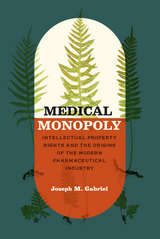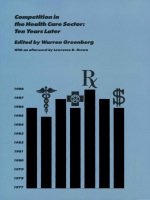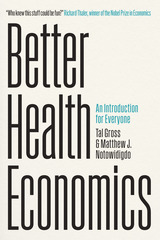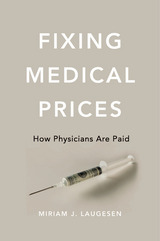Medical Care Output and Productivity
University of Chicago Press, 2001
Cloth: 978-0-226-13226-6 | eISBN: 978-0-226-13230-3
Library of Congress Classification RA410.5.M425 2001
Dewey Decimal Classification 338.433621
Cloth: 978-0-226-13226-6 | eISBN: 978-0-226-13230-3
Library of Congress Classification RA410.5.M425 2001
Dewey Decimal Classification 338.433621
ABOUT THIS BOOK | AUTHOR BIOGRAPHY | TOC | REQUEST ACCESSIBLE FILE
ABOUT THIS BOOK
With the United States and other developed nations spending as much as 14 percent of their GDP on medical care, economists and policy analysts are asking what these countries are getting in return. Yet it remains frustrating and difficult to measure the productivity of the medical care service industries.
This volume takes aim at that problem, while taking stock of where we are in our attempts to solve it. Much of this analysis focuses on the capacity to measure the value of technological change and other health care innovations. A key finding suggests that growth in health care spending has coincided with an increase in products and services that together reduce mortality rates and promote additional health gains. Concerns over the apparent increase in unit prices of medical care may thus understate positive impacts on consumer welfare. When appropriately adjusted for such quality improvements, health care prices may actually have fallen. Provocative and compelling, this volume not only clarifies one of the more nebulous issues in health care analysis, but in so doing addresses an area of pressing public policy concern.
This volume takes aim at that problem, while taking stock of where we are in our attempts to solve it. Much of this analysis focuses on the capacity to measure the value of technological change and other health care innovations. A key finding suggests that growth in health care spending has coincided with an increase in products and services that together reduce mortality rates and promote additional health gains. Concerns over the apparent increase in unit prices of medical care may thus understate positive impacts on consumer welfare. When appropriately adjusted for such quality improvements, health care prices may actually have fallen. Provocative and compelling, this volume not only clarifies one of the more nebulous issues in health care analysis, but in so doing addresses an area of pressing public policy concern.
See other books on: Cost effectiveness | Econometric models | Health Care Delivery | Medical care | Productivity
See other titles from University of Chicago Press




















